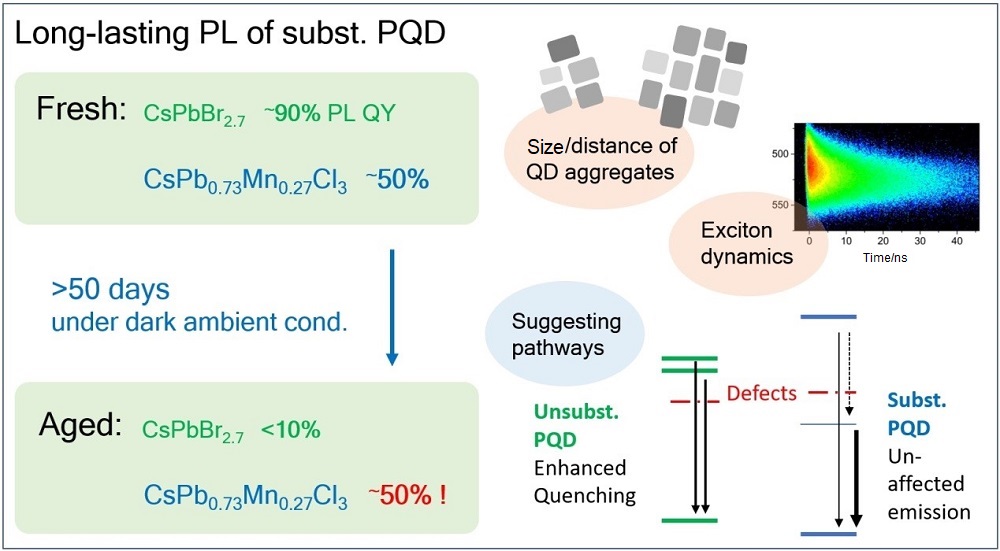One of the most effective ways to design novel perovskite QDs is substitution of the organic components with a proper metal such as cesium. CsPbX
3 (X= Cl, Br, I) QDs exhibited improved stability [
7–
10] and an impressive PL efficiency with the use of, for example, CsPbBr
3 [
11–
13]. With the improved PL QYs of CsPbX
3 QDs, various groups have demonstrated their potential in light-emitting diodes [
14–
17], as well as lasing applications [
18]. Furthermore, the optoelectronic properties of the QDs have been investigated for solar cells [
19], photoelectric detectors [
20], and specific metal-ion detection [
21,
22]. Those impressive results motivated further efforts for synthesis variations. For instance, Liu et al. showed that CsPbX
3-type QDs can be synthesized efficiently via a microwave irradiation method as a single-step reaction [
23]. One of the QDs fabricated using this method exhibited a PL QY of >90%. They also showed that the amount of toxic lead can be reduced while retaining the promising characteristics via replacement of lead with manganese. Some Mn
2+-substituted CsPbX
3-type QDs exhibit a high PL QY of approximately 50% but with a long spectroscopic lifetime [
24]. It is noteworthy that there were studies to replace lead with other metals like bismuth or tin, but their PL QYs seem to be lower than that of manganese case [
25,
26].












